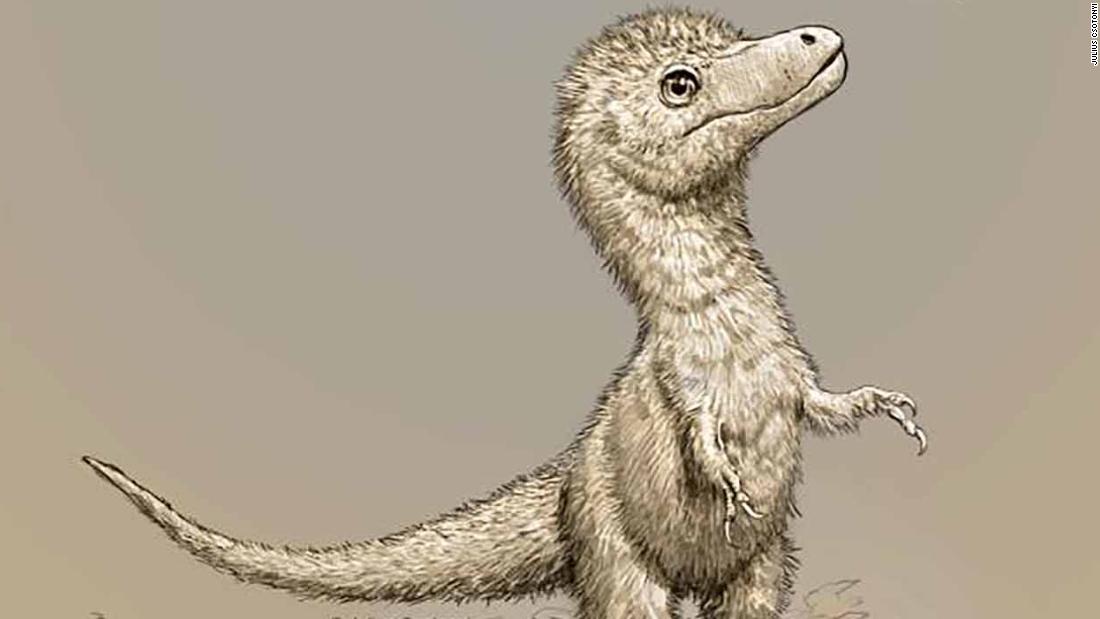
[ad_1]
Researchers studying the earliest known fossils of tyrannosaur embryos suggest the dinosaurs were about three feet long when they hatched, according to a University of Edinburgh study released on Monday.
A team of paleontologists studied the fossilized remains of a tyrannosaur embryo, namely a jaw bone and a claw that were found in Canada and the United States respectively.
After producing 3D scans of the remains, the researchers were able to predict that the dinosaurs would have hatched from eggs approximately 17 inches long.
Remains of tyrannosaur eggs have never been found, but the discovery could help paleontologists spot them in the future.
“Dinosaur babies are very rare,” study lead author Greg Funston, a paleontologist at the University of Edinburgh, told CNN, explaining that larger specimens are better represented in the fossil record because their bones were more durable.
“Most dinosaurs did not nest in an area where their eggs could be easily buried,” Funston added, making preservation of this type of find even rarer. “It’s a big deal,” he said.
The claw is from an Albertosaurus and the jaw bone from a Daspletosaurus, both of which are said to have reached about 35 feet in length.
They were slightly smaller than their more famous cousin, Tyrannosaurus rex, which reached 40 feet in length, Funston said.
The researchers found that the jawbone, which is just over an inch long, had distinctive features of the tyrannosaur group, including a pronounced chin.
While tyrannosaurs are known to have undergone many changes over the course of their lives, this shows that embryos already had certain physical traits before they hatched, Funston said.
The discovery could help settle debates over whether other specimens in the fossil record are from new species or from younger specimens of known species, he added.
Tyrannosaurs lived over 70 million years ago. Little is known about their early development, as most of the specimens studied come from older animals, Funston said, but researchers now know they were born with a full set of teeth and could hunt by themselves, although on smaller prey than adults.
“These were animals that hatched and were probably quite active shortly after they hatched,” Funston said.
The study was published in the Canadian Journal of Earth Sciences.
Funston said he planned to try to produce scans of the remains at a higher resolution, to allow the study of tooth development, which could reveal how long the tyrannosaurs spent inside the eggs before the outbreak.
[ad_2]
Source link